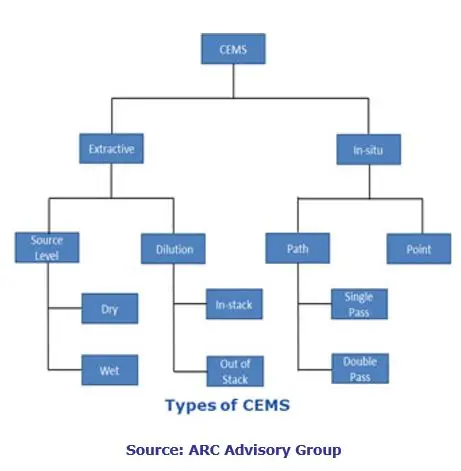


Emission monitoring systems are systems that monitor and diminish harmful byproducts of combustion and other processes that would otherwise be released into the atmosphere. Industrial processes regularly emit unburned hydrocarbons, carbon monoxide,  and oxides of nitrogen and sulfur, among other harmful pollutants. Emission control systems can convert these contaminants into water vapor and carbon dioxide, which may be safely released into the environment or recirculated.
and oxides of nitrogen and sulfur, among other harmful pollutants. Emission control systems can convert these contaminants into water vapor and carbon dioxide, which may be safely released into the environment or recirculated.
There are two types of emission monitoring systems. They are Continuous Emission Monitoring System (CEMS) and Predictive Emission Monitoring System (PEMS).
A CEMS is the total equipment necessary for the determination of a gas or particulate matter concentration or emission rate using pollutant analyzer measurements and a conversion equation, graph, or computer program to produce results in units of the applicable emission limitation or standard. CEMS are required under some of the environmental protection agency (EPA) regulations for either continual compliance determinations or determination of exceedances of the standards. The individual subparts of the EPA rules specify the reference methods that are used to substantiate the accuracy and precision of the CEMS.
CEMS are the traditional method of monitoring green-house gas emissions and are required by the majority of national environmental regulatory authorities.
A PEMS is the total system necessary for the determination of a gas concentration or emission rate using process or control device operating parameter measurements and a conversion equation, a graph, or computer program to produce results in units of the applicable emission limitation or standard. PEMS is a software-based emission monitoring solution that uses an emission model to predict emission levels. PEMS offers a less expensive alternative to CEMS; however, it needs to be validated with portable/actual analyzers.


